The Tonal workout machine is a home-workout device that allows you to do many of the same exercises you’d do in a commercial gym.
Bowflex for the digital age, basically.
As such, Tonal workouts resemble traditional strength workouts and include exercises such as the front squat, deadlift, and bench and overhead press.
Tonal’s pitch is straightforward: with their machine, you can build muscle, lose fat, and get fit without ever leaving the comfort of your living room.
While this is a bit of a stretch, Tonal workouts are certainly an effective way to get in shape when done properly.
In this article, you’ll learn exactly what a Tonal workout machine is, how Tonal workouts and Mirror workouts differ, whether or not you should invest in a Tonal, and the best Tonal home workouts you can do.
Table of Contents
+
What Is a Tonal Workout Machine?
The Tonal workout machine is a wall-mounted strength training machine designed to be used at home.
It features a 24-inch touchscreen that allows you to browse and play Tonal workout videos, and two adjustable “arms” (one on each side of the screen) that house cables that can be positioned to perform more than 170 resistance exercises including the deadlift, front squat, and bench and overhead press.
The Tonal workout machine uses powerful magnets to create up to 200 pounds of total resistance (100 pounds per arm), is compatible with different attachments such as a bar, handles, and a rope. The arms can also be folded away when not in use so that the machine resembles a sideways flat-screen TV.
Tonal workouts vs. Mirror workouts
Spend any time looking into the Tonal workout machine online and you’ll hear tell of Tonal’s biggest competitor: Mirror.
Like Tonal, Mirror is a wall-mounted at-home workout machine. The difference, however, is that Tonal focuses on strength training, while Mirror is geared towards cardio workouts.
Thus, if your main goal is to build muscle and gain strength, you’ll be better off with Tonal home workouts. And if you’re more interested in endurance training, you’ll probably be happier with Mirror.
Note: Many Tonal workout reviews online say that the biggest difference between Tonal workouts and Mirror workouts is that the latter can be done live and with a group, while the former can’t. This may have been true at one time, but now Tonal offers live and group classes as part of their membership package (which costs $49 per month).
Should You Use a Tonal Workout Machine?
Many online Tonal workout machine reviews suggest that Tonal is every bit as effective for gaining muscle and strength as a commercial or home gym stocked with barbells and dumbbells.
I disagree for several reasons:
- Research shows that free weight exercises activate more muscle than machine exercises (like Tonal), which likely leads to more muscle growth over time. Free weights also allow for more natural, comfortable movement patterns than most machines.
- Tonal only provides a maximum of 200 pounds of resistance. This is more than enough for strength training novices but insufficient for achieving progressive overload after your first 6-to-12 months of weightlifting (especially on exercises like the squat, bench press, and deadlift).
- Free weights allow for more exercise variation, and while this may not be necessary for muscle growth per se, it does make for more interesting workouts (which are generally more effective).
- The Tonal workout machine costs about $3,000, which is about what you’d pay for a very well-equipped home gym. The price also jumps another one-to-two grand when you include shipping, installation, optional membership package, and accessories.
- Tonal is far more likely to have mechanical problems and breakdowns than a barbell or dumbbell, and it requires electricity (no power, no workout).
That said, Tonal has its merits. It’s better than many other home-gym solutions (and much better than nothing), it takes up very little space, and it’s a novel and effective way to train.
If you’re serious about building muscle and getting strong, though, and you have the space for it, you’re much better off investing in a barbell- and dumbbell-based home gym.
The Best Tonal Workout Program
This Tonal home workout program is adapted from my strength training programs for men and women, and contains all the best exercises you can do to gain muscle and strength.
If the 5-day per week Tonal workout program doesn’t fit your schedule, you can shorten it to a 4-day routine by skipping workout 5. And if you’d prefer to do a 3-day routine, skip workouts 3 and 5.
Tonal Workout 1: Push
1. Barbell Bench Press
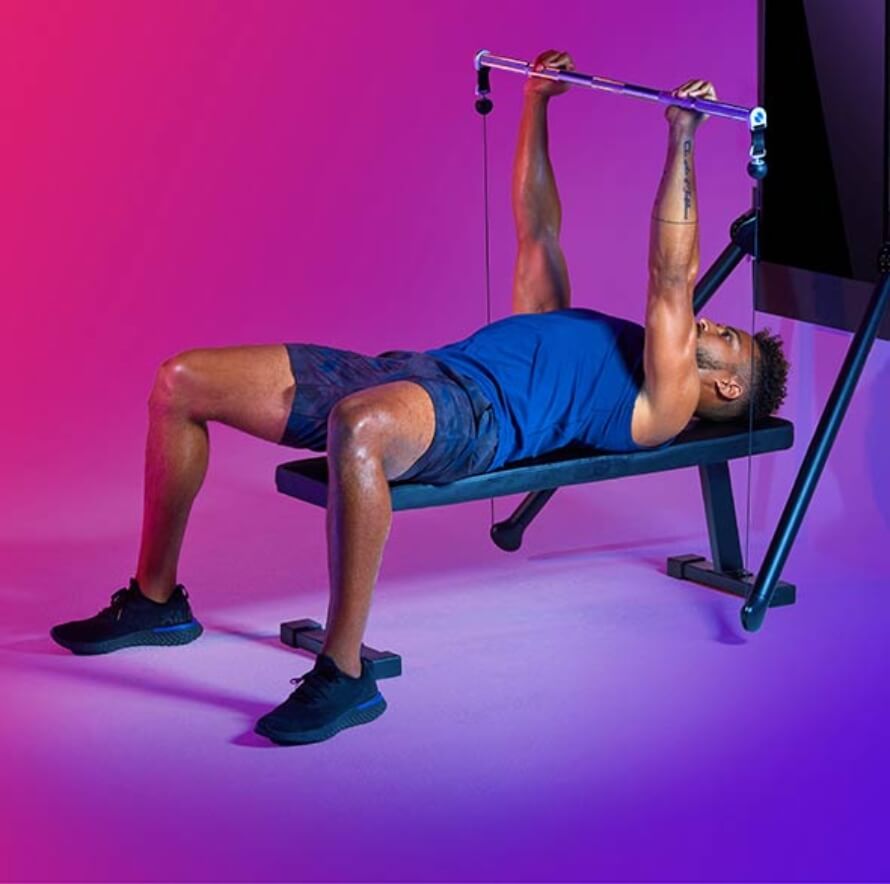
The barbell bench press is one of the single best exercises for building almost every major muscle in your upper body, including your pecs, triceps, and deltoids. This is why almost all well-designed push workouts are built around heavy benching.
Sets: 3 | Reps: 6-to-8 | Rest: 2-to-3 min
2. Bench Press (with Handles)
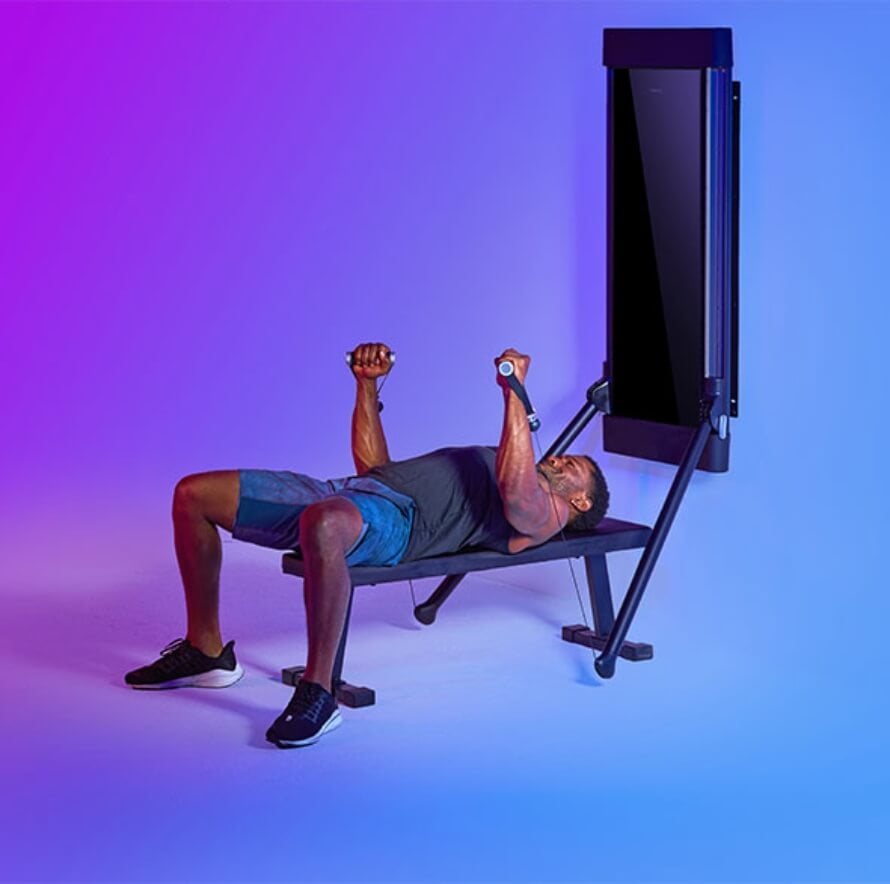
The bench press with handles trains the pecs, shoulders, and triceps in a similar way to the barbell bench press. In this case, however, each side of your body has to work independently, which is useful for identifying and evening out any strength or muscle imbalances you might have.
Sets: 3 | Reps: 8-to-10 | Rest: 2-to-3 min
3. Standing Incline Chest Press

The standing incline chest press trains your chest, triceps, and shoulders, but it also helps train your “upper chest” muscles in particular.
Sets: 3 | Reps: 8-to-10 | Rest: 2-to-3 min
4. Triceps Extension
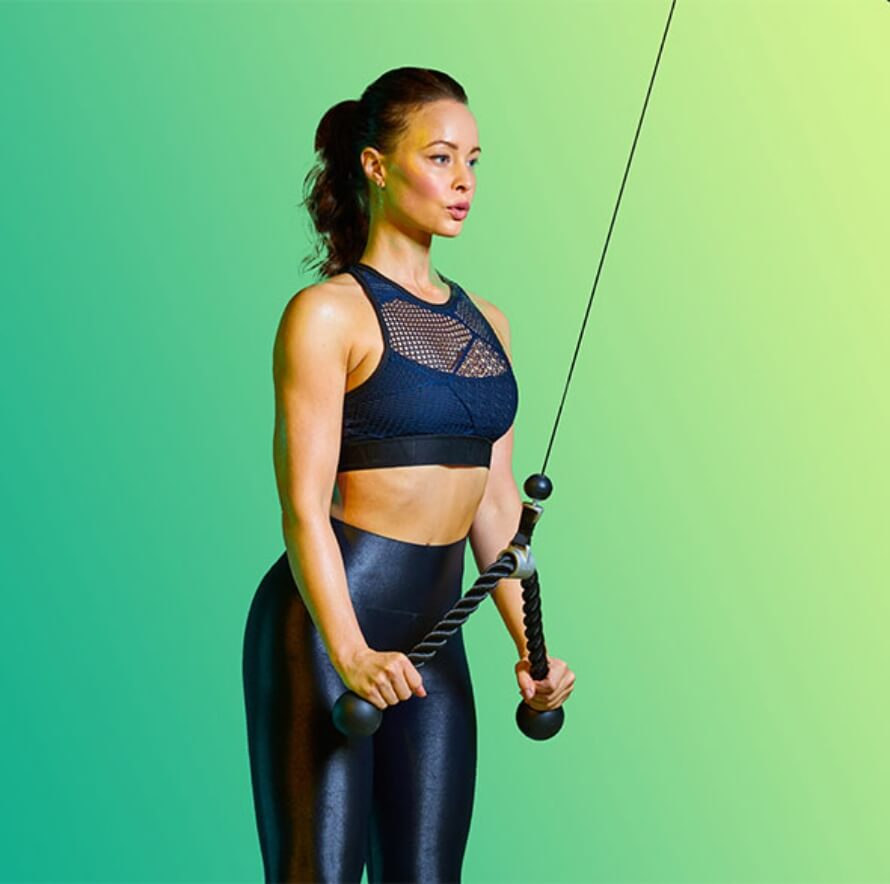
The triceps extension is particularly good for emphasizing the long head of the triceps. The long head is also the largest of the three sections of the triceps, and so training this portion of your triceps will have the biggest impact on your upper arm size.
Sets: 3 | Reps: 8-to-10 | Rest: 2-to-3 min
Tonal Workout 2: Pull and Calves
1. Barbell Deadlift
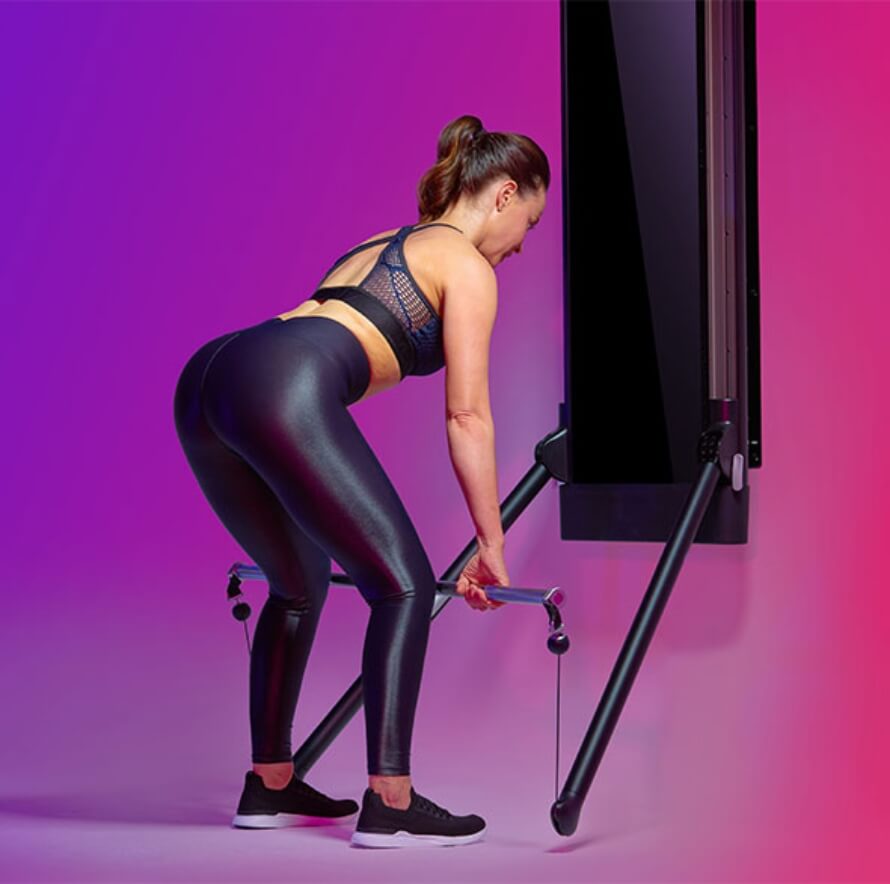
The deadlift is hands down the best exercise for training your entire posterior chain (the muscles on the back side of your body). It also allows you to use some of the heaviest weights in any of your workouts, which means it’s ideal for gaining strength and muscle.
Sets: 3 | Reps: 6-to-8 | Rest: 2-to-3 min
2. Single-Arm Bent-Over Row
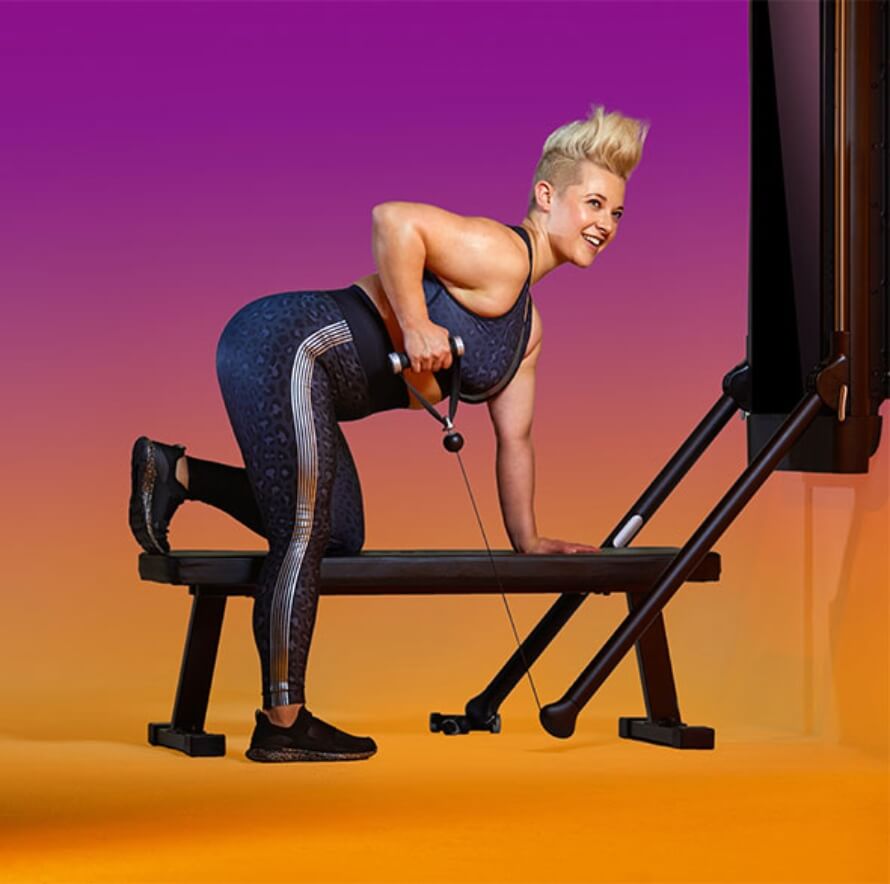
The main benefits of the single-arm bent-over row are that it trains each side of your body independently and that you can use a bench to support your body. This means you can lift more weight per side than you can when you do barbell rows, which is generally better for muscle growth.
Sets: 3 | Reps: 8-to-10 | Rest: 2-to-3 min
3. Seated Lat Pulldown
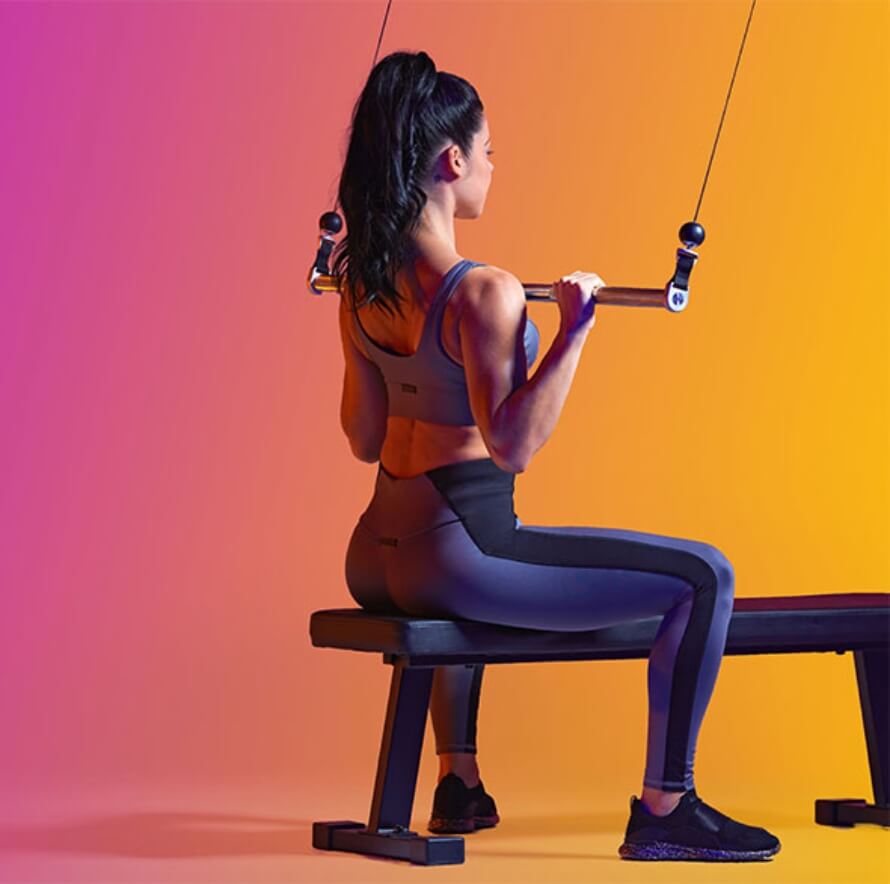
The lat pulldown is an excellent exercise for training your entire back, including your lats, erector spinae, rear delts, rhomboids, infraspinatus, and traps.
Sets: 3 | Reps: 8-to-10 | Rest: 2-to-3 min
4. Bent-Knee Calf Raise
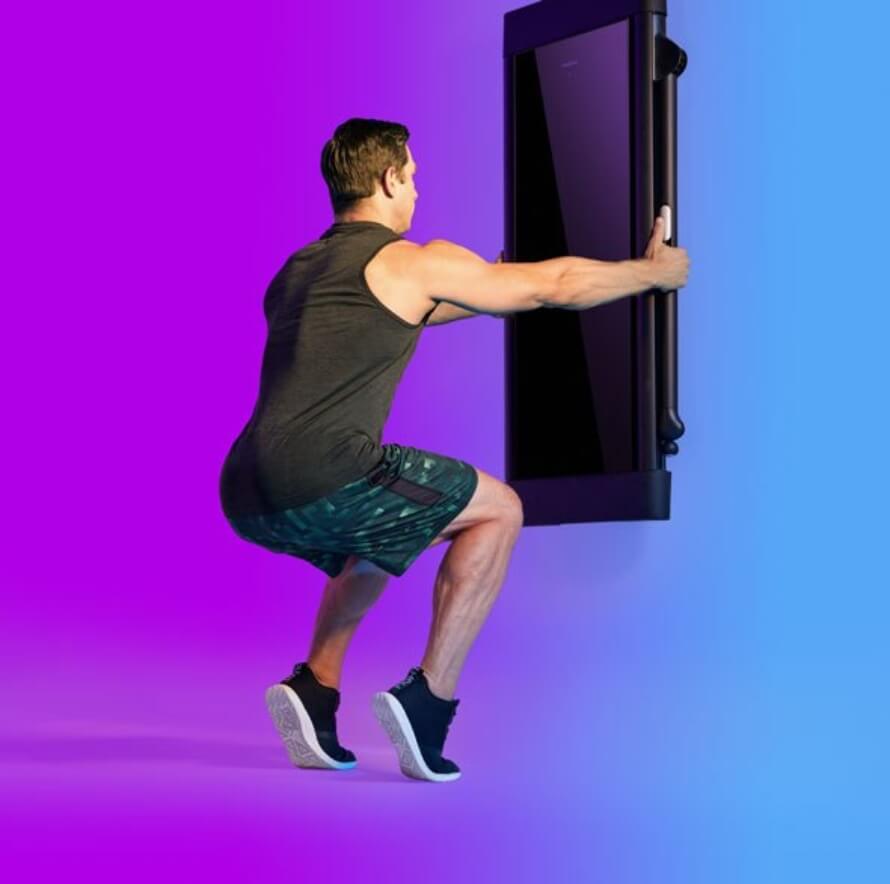
The bent-knee calf raise helps you develop your calf muscles which is important if you want to run faster, jump higher and further, and improve stability during lower-body exercises like the front squat and deadlift. It also helps improve your muscular proportions to achieve a more symmetrical, “aesthetic” physique.
Sets: 3 | Reps: 8-to-10 | Rest: 2-to-3 min
Tonal Workout 3: Upper Body A
1. Standing Barbell Overhead Press
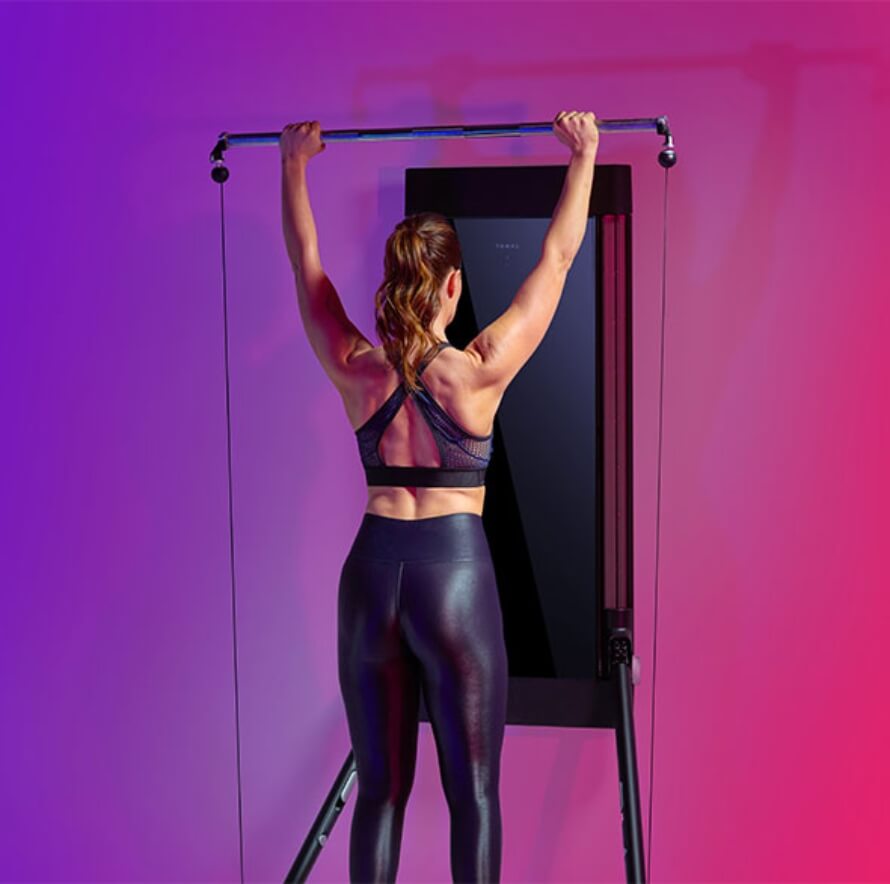
The standing barbell press develops your whole-body balance and coordination and trains nearly all of the pushing muscles in your upper body, including your chest, shoulders, and triceps.
Sets: 3 | Reps: 6-to-8 | Rest: 2-to-3 min
2. Lateral Raise
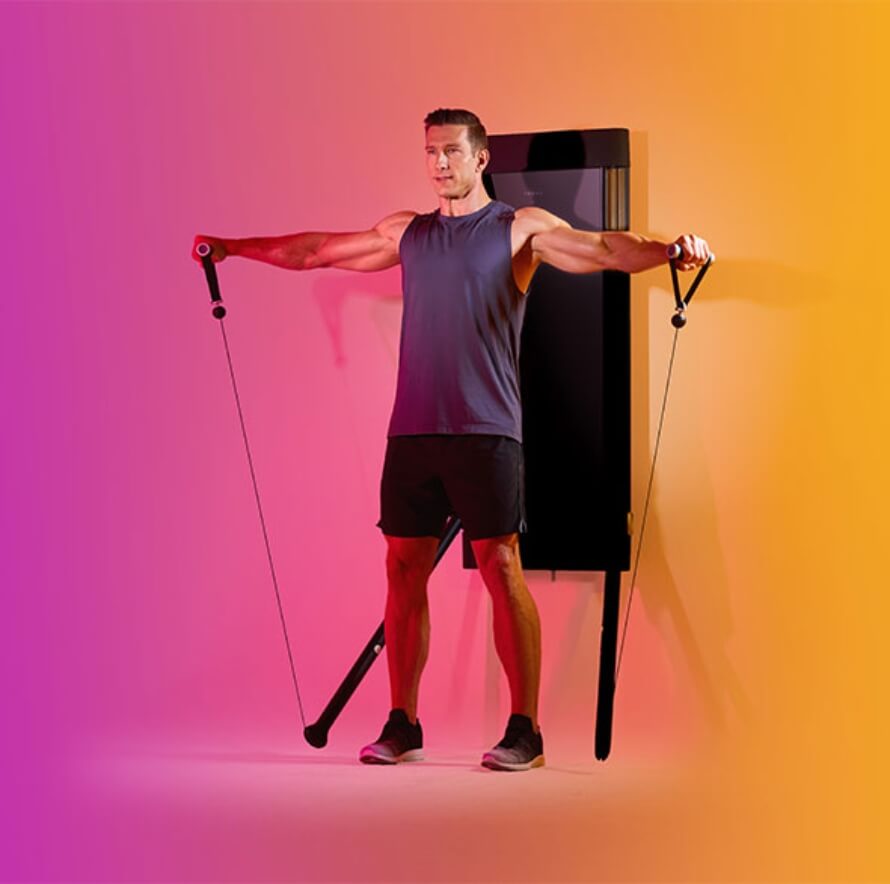
The lateral raise is one of the best ways to emphasize the lateral (side) head of the deltoids, which is important if you want full, proportional shoulders.
Sets: 3 | Reps: 8-to-10 | Rest: 2-to-3 min
3. Reverse Fly
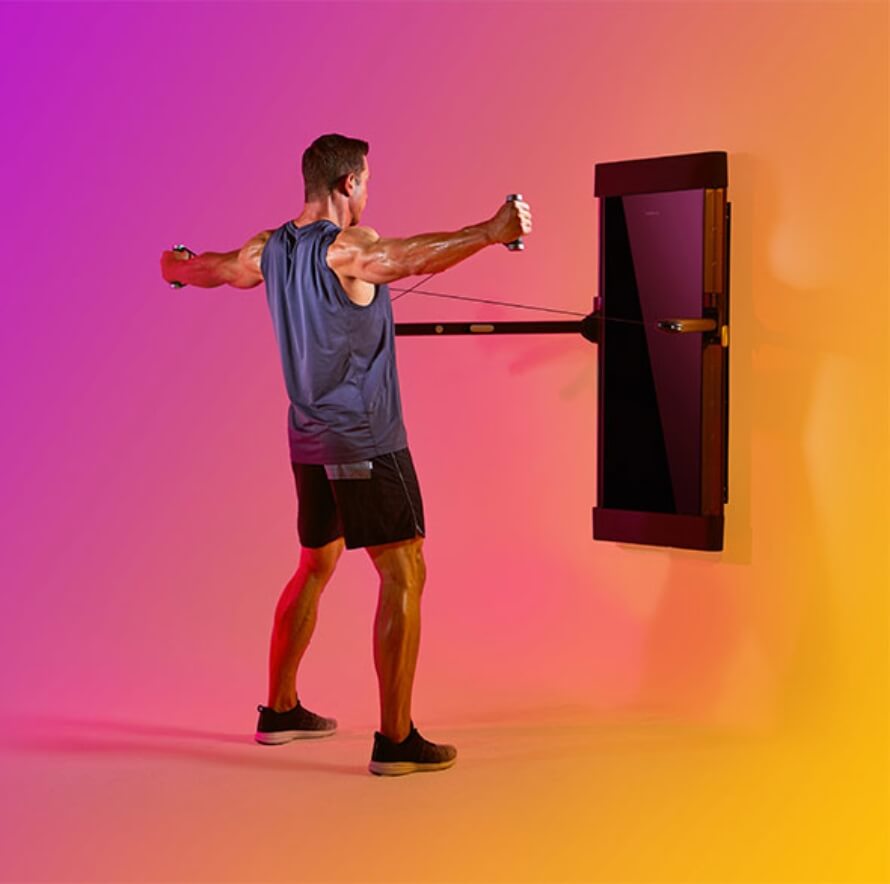
The reverse fly is a great exercise for training your rear delts, which are small, stubborn muscles that often need a bit of extra attention if you want them to grow as quickly as your other shoulder muscles.
Sets: 3 | Reps: 8-to-10 | Rest: 2-to-3 min
4. Biceps Curl
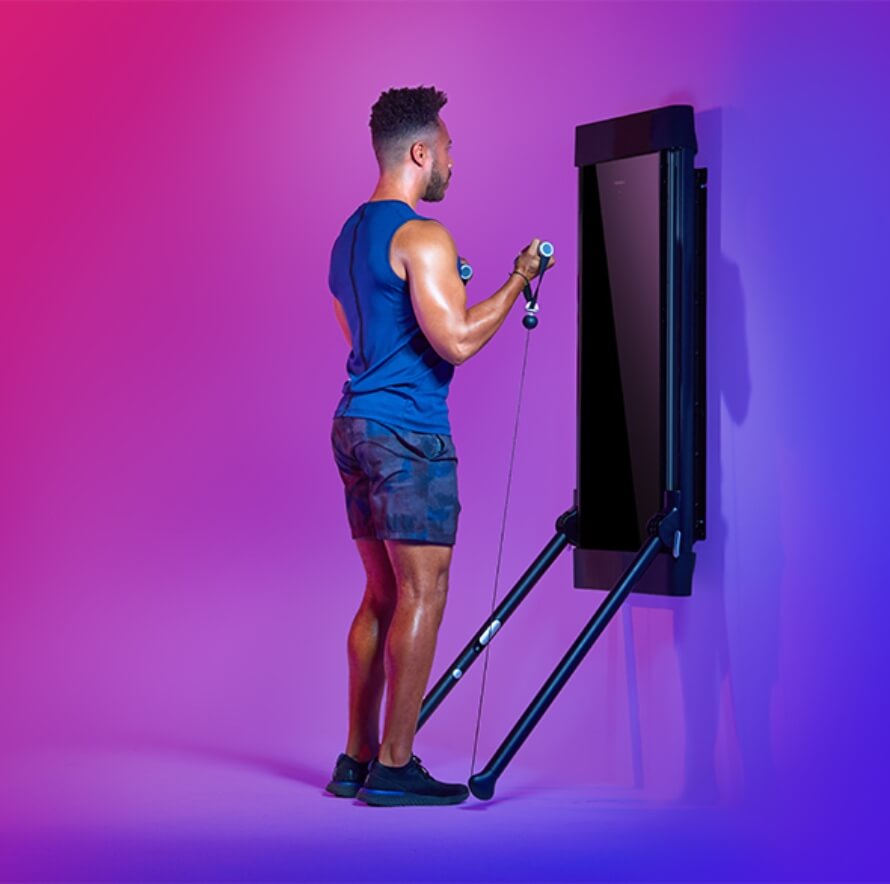
The biceps curl is a staple biceps exercise because it’s simple, effective, and allows you to train each arm independently, which helps prevent one arm from getting bigger or stronger than the other.
Sets: 3 | Reps: 8-to-10 | Rest: 2-to-3 min
Tonal Workout 4: Legs
1. Barbell Front Squat
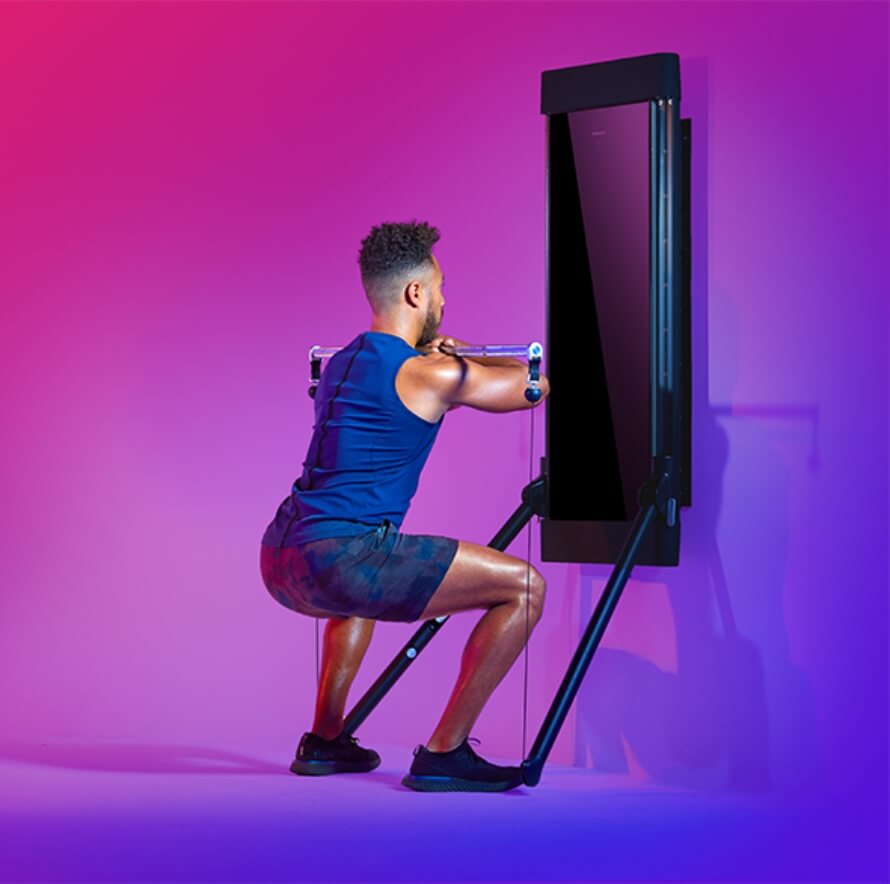
The front squat is a highly effective quad exercise that’s often more comfortable than other squat exercises for people who have knee or back pain.
Sets: 3 | Reps: 6-to-8 | Rest: 2-to-3 min
2. Bulgarian Split Squat
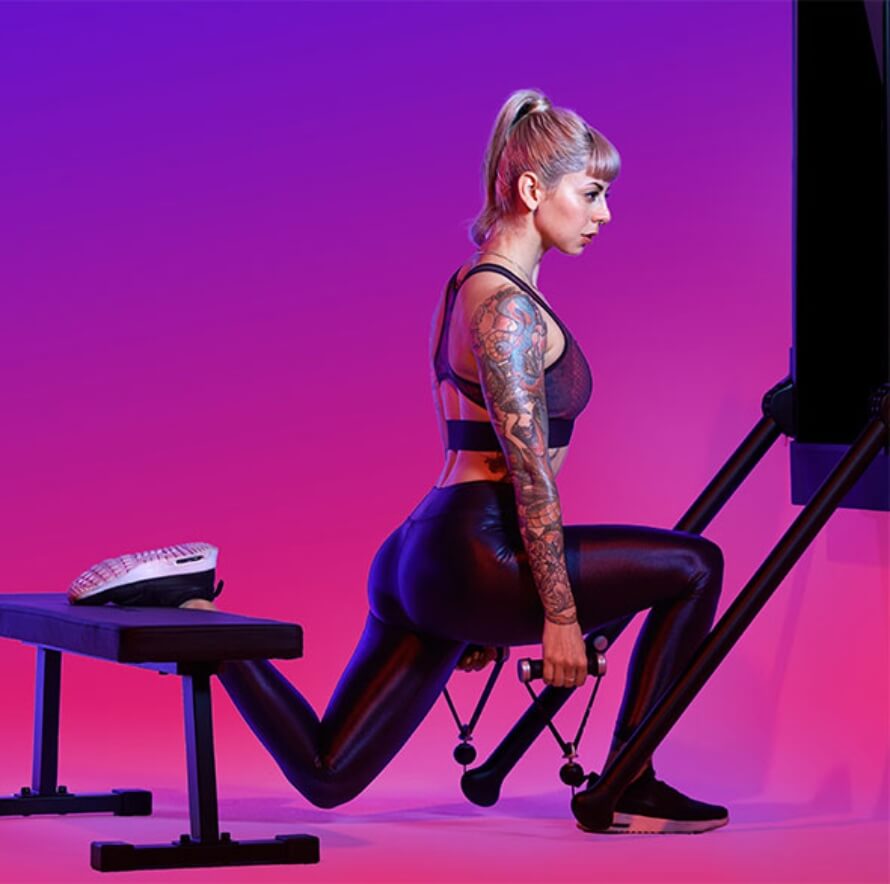
Like every squat variation, the Bulagrian split squat is a great exercise for training all the muscles of the legs. Because the Bulgarian split squat trains just one leg at a time, it’s useful for identifying and evening out any muscle or strength imbalances you might have.
Sets: 3 | Reps: 8-to-10 | Rest: 2-to-3 min
3. Barbell RDL
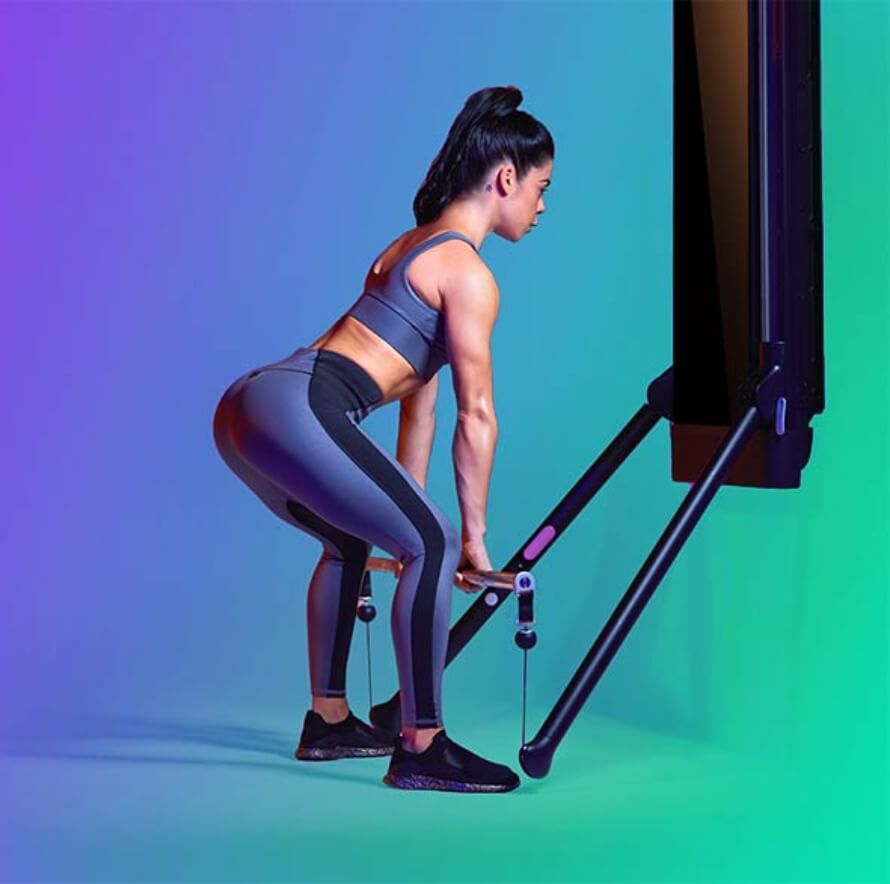
The Romanian deadlift (RDL) trains your entire posterior chain (the muscles on the back side of your body) with an emphasis on your hamstrings and glutes.
Sets: 3 | Reps: 8-to-10 | Rest: 2-to-3 min
4. Resisted Step-Up
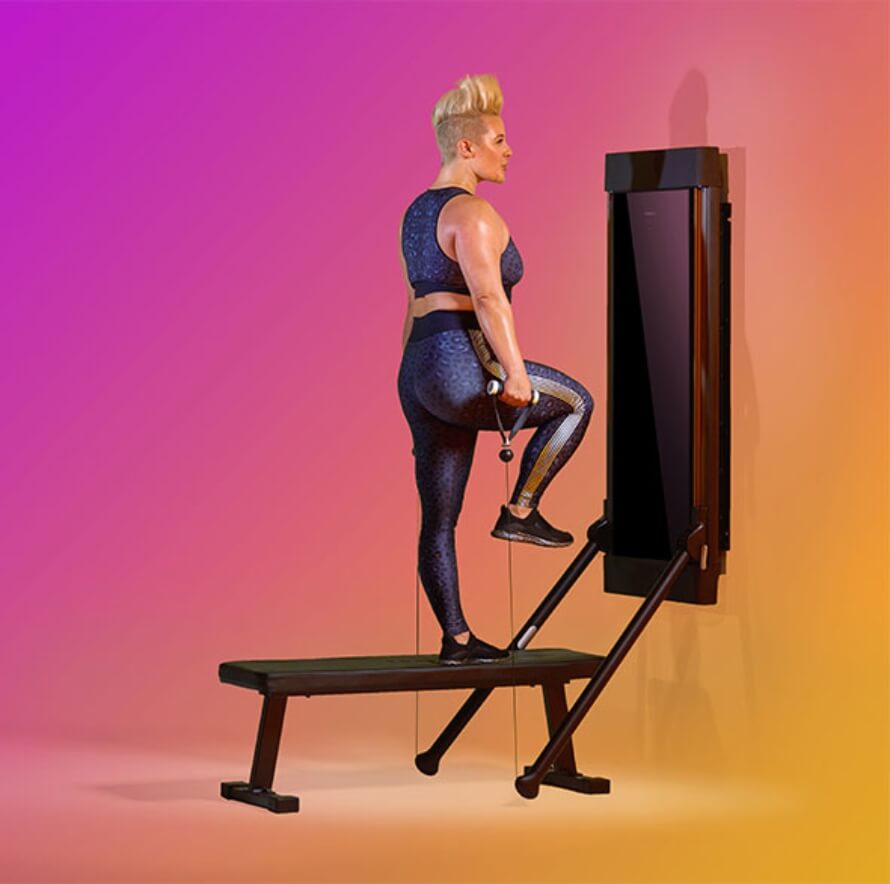
The resisted step-up is an excellent exercise for activating the glutes and quads. The downside is that you generally can’t use as much weight with the resisted step-up as you can with other exercises like the front squat and deadlift, which is why it’s best to do this exercise toward the end of your workouts.
Sets: 3 | Reps: 8-to-10 | Rest: 2-to-3 min
Tonal Workout 5: Upper Body B
1. Bench Press (with Handles)
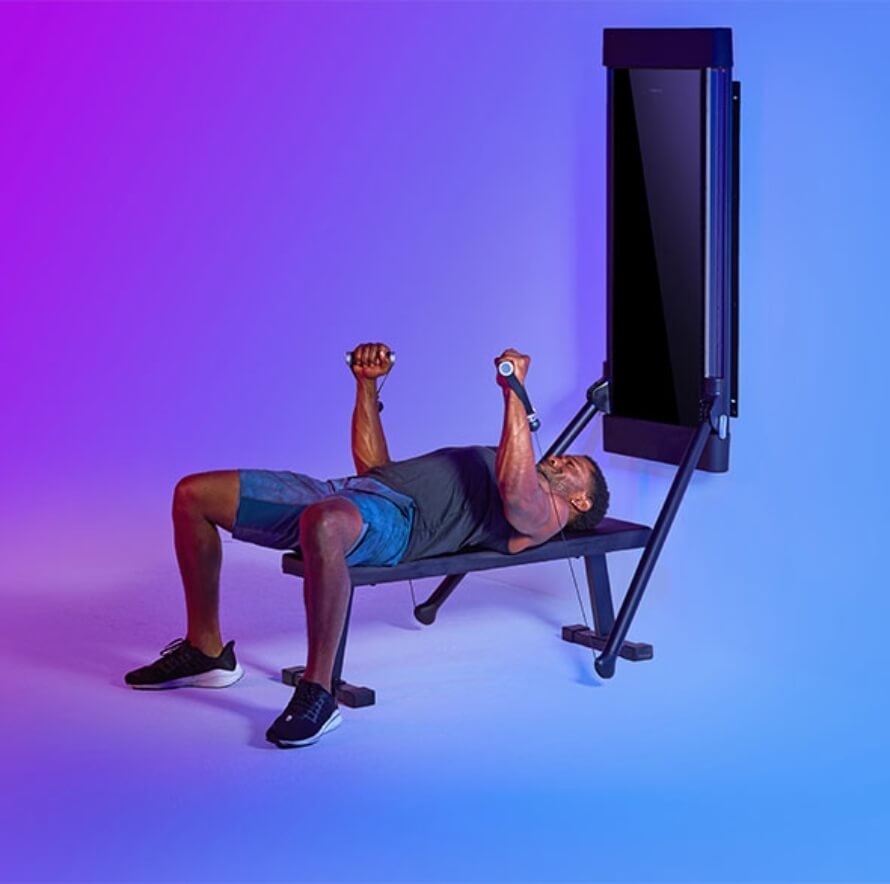
The bench press with handles trains the pecs, shoulders, and triceps in a similar way to the barbell bench press. In this case, however, each side of your body has to work independently, which is useful for identifying and evening out any strength or muscle imbalances you might have.
Sets: 3 | Reps: 8-to-10 | Rest: 2-to-3 min
2. Supinated Lat Pulldown
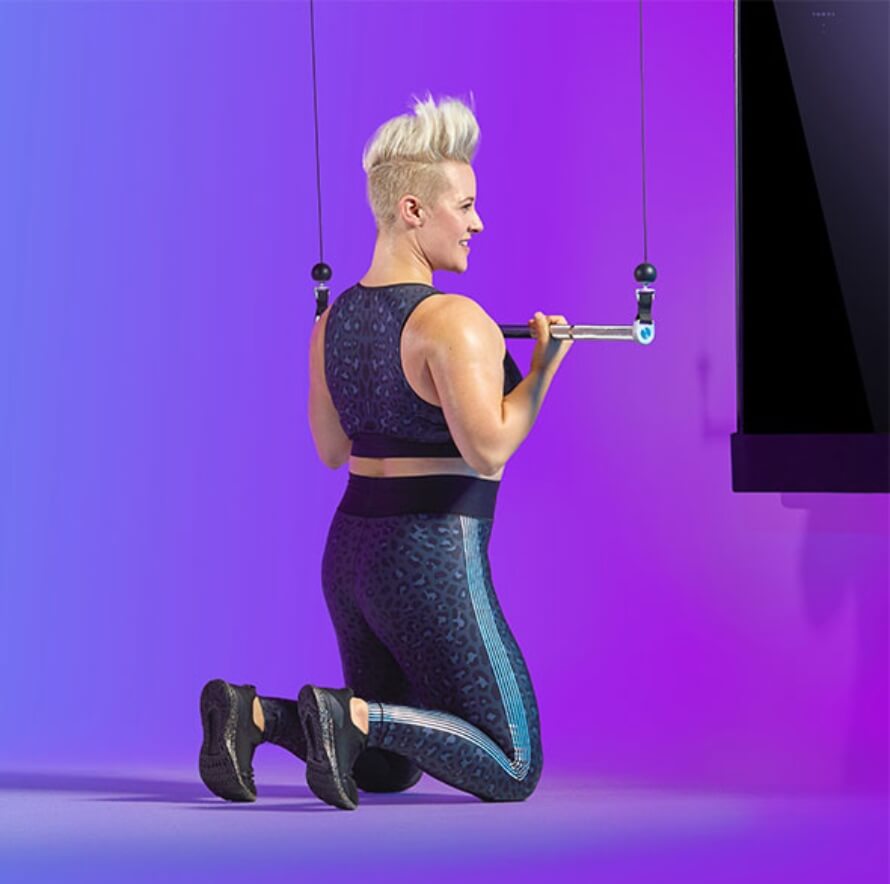
Like the barbell seated lat pulldown, the supinated lat pulldown is a great exercise for training all the muscles of the back. The main difference between the two exercises is that the supinated lat pulldown trains your biceps slightly more than the lat pulldown, whereas the lat pulldown trains your lats a little more than the supinated lat pulldown. (Even though Tonal refers to this as a “chin-up,” it’s more accurately described as the supinated lat pulldown—you can’t do chin-ups with Tonal).
Sets: 3 | Reps: 8-to-10 | Rest: 2-to-3 min
3. Skull Crusher (with Handles)

The skull crusher is a great exercise for training all of the heads of your triceps, ensuring you have defined, proportional upper arms.
Sets: 3 | Reps: 8-to-10 | Rest: 2-to-3 min
4. Barbell Biceps Curl
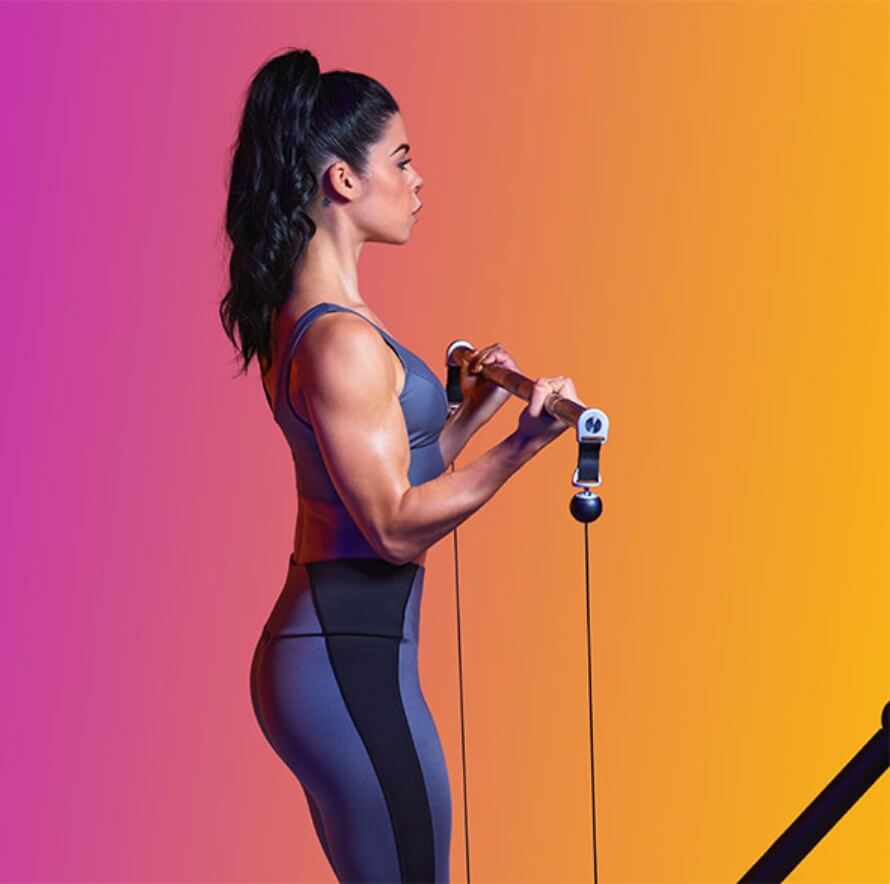
Biceps curls are the most effective isolation exercise for training your biceps, and using a barbell allows you to go as heavy as possible which is generally better for muscle growth.
Sets: 3 | Reps: 8-to-10 | Rest: 2-to-3 min
How to Progress in Your Tonal Workouts
If you want to build muscle and gain strength, you have to strive to add weight or reps to every exercise in every workout.
This is known as progressive overload, and it’s the best way to maximize the strength- and muscle-building effects of resistance training.
The easiest way to do this is to use double progression—a method for increasing your weights once you hit the top of your rep range for a certain number of sets (often one).
For instance, let’s say your Tonal workout calls for 6-to-8 reps of barbell bench press. If you get 8 reps on one set, you’d add 10 pounds of total resistance for your next set and work with that weight until you can (eventually) press it for 8 reps, and so forth.
If you get 5 or fewer reps with your new (higher) weight on your next set, you’d reduce the resistance by 5 pounds to ensure you can stay within your target rep range (6-to-8) for all sets.
Traditional barbell exercises like the squat, bench press, and deadlift allow you to add hundreds of pounds of weight (even a bush league barbell can hold over 1,000 pounds), which means that you can continue adding weight on these exercises as long as your body keeps getting stronger.
With Tonal, though, you can use a maximum of 200 pounds of resistance, which means you’ll likely reach a point where you “outgrow” your Tonal workouts and need to switch to free weights to keep progressing in the same rep range.
If you can’t do this for whatever reason (lack of space, personal preference, etc.), you can continue progressing in your Tonal workouts by doing more sets and/or reps.
For example, if you can deadlift 200 pounds for 8 reps using your Tonal, the only way to progress is to do more reps or sets (since you’re already using the maximum amount of weight). Of course, you can only do this so long before it becomes impractical (deadlifting 10 sets for 20-reps each is no fun).
FAQ #1: What’s the best Tonal leg workout?
Here’s the best Tonal leg workout for overall leg development:
- Barbell Front Squat: 3 sets of 6-to-8 reps with 2-to-3 min rest
- Bulgarian Split Squat: 3 sets of 8-to-10 reps with 2-to-3 min rest
- Barbell RDL: 3 sets of 8-to-10 reps with 2-to-3 min rest
- Resisted Step-Up: 3 sets of 8-to-10 reps with 2-to-3 min rest
FAQ #2: Can you do a Tonal ab workout?
Yes.
Here’s an example of a good Tonal ab workout:
- Kneeling Cable Pull: 3 sets of 10-to-12 reps with 1 min rest
- Standing Pallof Press: 3 sets of 10-to-12 reps (each side) with 1 min rest
- Rotational Chop: 3 sets of 10-to-12 reps (each side) with 1 min rest
FAQ #3: Can you do a Tonal golf workout?
Not really.
Golf workouts tend to focus on building explosive power, which you achieve by doing regular exercises like the squat and deadlift with light weights as quickly as possible, or by doing exercises that allow you to lift weights explosively, such as the power clean or jump squat. Unfortunately, it’s not practical to lift explosively with Tonal.
On the plus side, you can do several rotational exercises with Tonal such as the rotational chop, the rotational lift, and the incline chop that will help to improve your rotation and core strength and thus your stability as you rotate through your swing.
FAQ #4: What’s the Tonal workout machine price?
The price of the Tonal workout machine is $2,995, however you’ll likely have to spend considerably more to have it shipped, installed, and equipped with everything you need to get the most out of it.
For example, a Tonal membership costs $49 per month (with a minimum 12-month commitment), the “Smart Accessories” pack (which contains the handles, bar, rope, mat, and bench that you need for your workouts) costs an additional $495, and shipping and installation (which must be done by Tonal) varies in price depending on where you live.
FAQ #5: Can you do Tonal group workouts?
Yes.
Previously, one of the most common criticisms of Tonal was that you couldn’t do group or live workouts.
As of October 2020, though, you can do group workouts, and as of October 2021 you can do live workouts on Tonal.
Scientific References +
- Escamilla, R. F., Fleisig, G. S., Zheng, N., Lander, J. E., Barrentine, S. W., Andrews, J. R., Bergemann, B. W., & Moorman, C. T. (2001). Effects of technique variations on knee biomechanics during the squat and leg press. Medicine and Science in Sports and Exercise, 33(9), 1552–1566. https://doi.org/10.1097/00005768-200109000-00020
- Schwanbeck, S., Chilibeck, P. D., & Binsted, G. (2009). A comparison of free weight squat to Smith machine squat using electromyography. Journal of Strength and Conditioning Research, 23(9), 2588–2591. https://doi.org/10.1519/JSC.0B013E3181B1B181
- Kim, Y. S., Kim, D. Y., & Ha, M. S. (2016). Effect of the push-up exercise at different palmar width on muscle activities. Journal of Physical Therapy Science, 28(2), 446. https://doi.org/10.1589/JPTS.28.446
- Jakobi, J. M., & Chilibeck, P. D. (2001). Bilateral and unilateral contractions: possible differences in maximal voluntary force. Canadian Journal of Applied Physiology = Revue Canadienne de Physiologie Appliquee, 26(1), 12–33. https://doi.org/10.1139/H01-002
- Wojtys, E. M., Huston, L. J., Taylor, P. D., & Bastian, S. D. (1996). Neuromuscular adaptations in isokinetic, isotonic, and agility training programs. The American Journal of Sports Medicine, 24(2), 187–192. https://doi.org/10.1177/036354659602400212
- Lehman, G. J., Buchan, D. D., Lundy, A., Myers, N., & Nalborczyk, A. (2004). Variations in muscle activation levels during traditional latissimus dorsi weight training exercises: An experimental study. Dynamic Medicine : DM, 3, 4. https://doi.org/10.1186/1476-5918-3-4
- Schoenfeld, B. J. (2010). The mechanisms of muscle hypertrophy and their application to resistance training. Journal of Strength and Conditioning Research, 24(10), 2857–2872. https://doi.org/10.1519/JSC.0B013E3181E840F3










